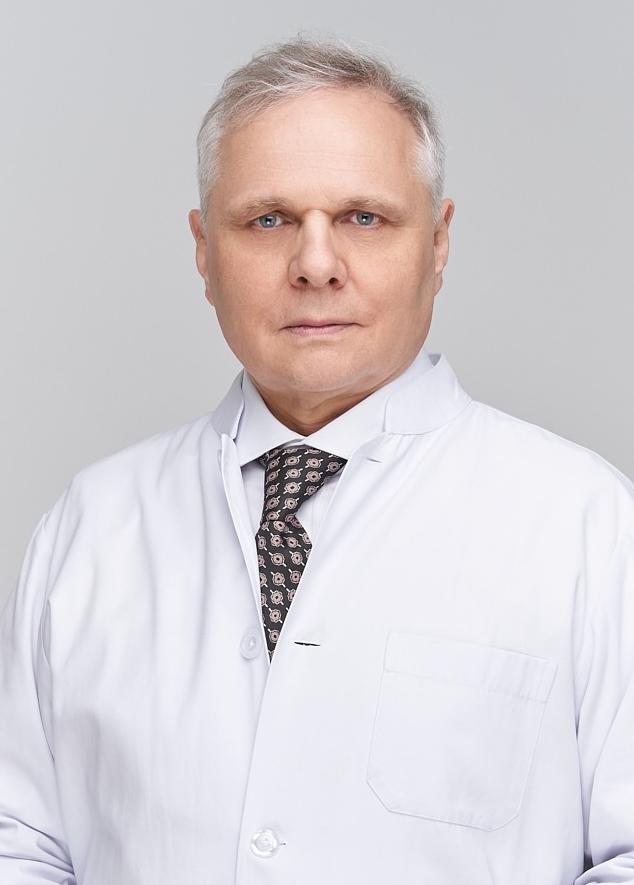
The term “psychosis” refers to a group of mental disorders in which individuals perceive or process reality in an altered way. The condition is not a defined psychiatric diagnosis. Affected individuals typically experience hallucinations, delusions, or severe thought disturbances. These symptoms are often accompanied by intense anxiety.
Psychoses can be classified based on their cause, the predominant symptoms, and their duration.
In this article, we describe the most common symptoms of psychoses, their diagnosis, and treatment in Dubai.
For Treatment of Psychoses Set an Appointment Today with Our Leading Psychiatrist, Dr. Kowal
Call CHMCRead more about psychoses:
Primary psychoses
are those where no identifiable cause can be determined. The most common form of primary psychosis is schizophrenia, although other types of psychotic disorders, each with different clinical presentations, are also recognized.
Secondary psychoses
have an identifiable cause that directly or indirectly affects the brain. These psychoses can result from organic illnesses (e.g., epilepsy, brain tumors, infections, injuries, or severe metabolic disorders), side effects of medications (e.g., corticosteroids), or the use of psychoactive substances (e.g., alcohol, drugs like cannabis, or LSD).
Psychosis affects men and women equally and is relatively common. Globally, approximately 3–4% of the population experiences psychosis at some point in their lives. Many forms of psychosis begin between puberty and the age of 35 but can theoretically develop at any age. Psychoses are rare in childhood. In older age, psychotic states often occur in the context of internal medical conditions or brain diseases (e.g., dementia). Furthermore, psychotic states can also arise in the context of depression, mania, or bipolar disorders.
A person suffering from psychosis may be partially or completely detached from reality. This means that the person has difficulties determining what is real and what is the product of phantasy. Mental health experts describe the psychotic state as akin to a psychological condition we experience while dreaming. People suffering from psychosis are like someone who dreams with open eyes.
Psychoses. Signs and symptoms
The most common symptoms of psychosis are delusions and hallucinations. Additional symptoms are incoherent thinking, disorganized speech, and erratic and/or inappropriate behaviour. Other symptoms of psychosis, in psychiatric terms called “negative symptoms,” include apathy, diminished emotional expression, and social withdrawal.
Delusions
One of the most common symptoms of psychosis are delusions. A delusion is a false belief contradicting reality while resisting any logical explanation or proof. Delusions may include various thematic content. They are context- and culture-dependent. Delusional themes reflect the current culture of a particular time and place. The DSM-5 characterizes a particular delusion as “bizarre” if it is clearly implausible or inconsistent with the surrounding cultural context.
The German psychiatrist and philosopher Karl Jaspers proposed to classify psychotic delusions into primary and secondary types. He theorized that primary delusions appear suddenly and that they are irrational in terms of normal psychological processes. Jaspers describes secondary delusions that are influenced by the person’s current situation and personal and cultural background.
Persecutory delusions or paranoia
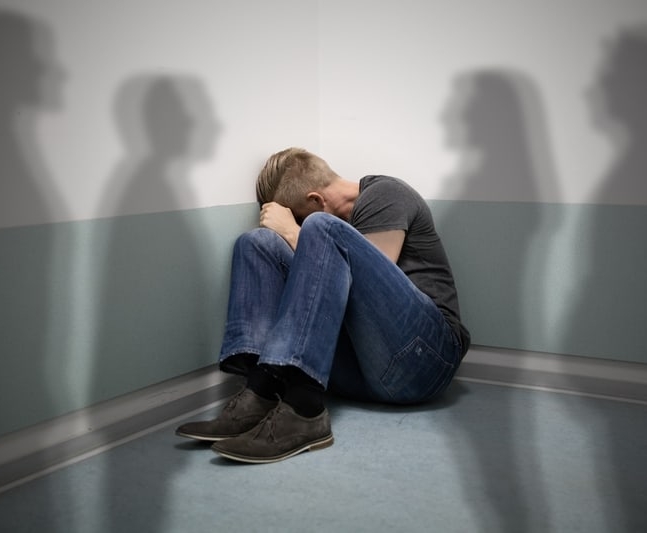
The most common type of delusions in psychosis are delusions of persecution. Symptoms of persecutory delusions include extreme paranoia, fears, and worries about imminent harm, even though the imaginary threat is unproven or impossible. In this type of delusion, the patient believes that someone (individual, organization, or group) is trying to harm him or his loved one.
These delusions can range from plausible concerns, for example, loud voices in the neighborhood, the person referring to himself, or infidelity of a spouse, to impossible or highly unlikely stories. The person may believe that he or she is being spied on. He tends to repeat unsubstantiated accusations, including police reports. The patient maintains and justifies his delusional ideas with any supporting, even unrealistic, evidence that he can find.
The fear and anxiety that accompany paranoia are overwhelming. Depending on the severity of the condition, this could lead the sufferer to take radical measures to prevent or defend against the alleged threat. Left untreated, the persecutory delusions tend to get chronic and may persist for life.
Delusions of reference
Referential delusions are among the most common psychosis symptoms. This condition involves a person falsely believing that ordinary events or behaviors carry hidden messages meant specifically for them. Individuals may feel they’re being watched or talked about by others sometimes even by secret services and remain convinced despite clear evidence to the contrary.Such delusions often stem from a defense mechanism called projection, which helps support the Ego by placing the person at the center of imagined plots. This distorted perception may offer a false sense of importance, even though it leads to emotional distress. Patients experiencing these symptoms should seek help from a qualified psychiatrist in Dubai or explore psychotherapy in Dubai for professional assessment and support. In some cases, overlapping conditions like somatic symptom disorder may also complicate diagnosis and require specialized care.
Delusions of grandeur or megalomania

Delusions of grandeur are also called megalomania. These delusions are common in the manic phase of bipolar disorder but can be observed in other psychiatric disorders. People who suffer from megalomania see themselves as great, highly skilled, and more important than others. They also often feel they are equipped with magical powers. Delusions of grandeur can be persistent or intermittent.
Megalomania is more than simply having self-esteem that is too high. It marks a significant disconnection and alienation from the real world. People with megalomania may continue to believe in their delusions despite the contrary evidence. Psychiatrists note that megalomania may be associated with mental or physical health conditions, such as schizophrenia, bipolar disorder, or some forms of dementia.
A megalomaniac feels an exaggerated sense of importance. Megalomania is a false or abnormal belief in one’s own greatness. For example, a person may believe that he or she is famous or has unlimited power. People who suffer from megalomania see themselves as great, highly skilled, more important than others, and even magical. Delusions can be persistent or intermittent. Some people with megalomania also experience other delusions, such as fear of persecution or unusual religious beliefs. But megalomania is not just about having very high or excessive self-esteem. It marks a significant disconnect from the real world. People with megalomania may continue to believe in their delusions despite conflicting evidence.
Delusions of thought broadcasting
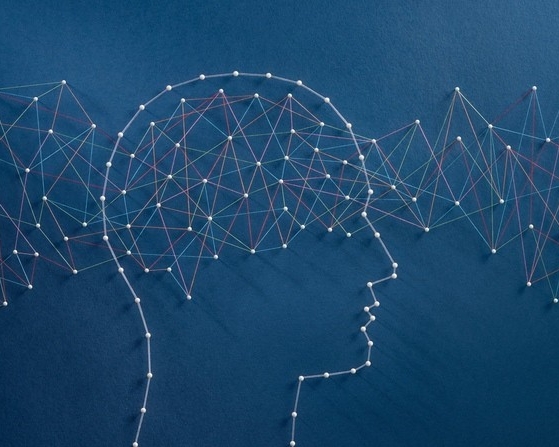
Thought broadcasting is the belief that one’s thoughts are audible. Patients believe that other individuals can overhear and control their thoughts. They may also become convinced that their thoughts can be broadcast on radio, television, or the internet. The patient will conclude that whatever he thinks is transparent to others. Patients with delusions of any type, including thought broadcasting, often do not discuss their symptoms with family or friends. This is especially the case if they keep some confirmation of reality. They wind up living in two worlds: in the real world, where they act normally, and in their delusional world. Psychiatrists that diagnose patients with thought broadcasting have found that it can take years to discover this delusion. Even family and friends do not notice the patient’s symptoms. This is a common delusion among patients with schizophrenia.
Thought insertion
This type of delusional disorder involves the belief that one’s thoughts are not their own but have been created or implanted by an external power. The individual may think a particular person, institution, or unknown entity referred to as a “thought inserter” is controlling their mind. They feel as if their mental space has been invaded and that the thoughts they experience originate in someone else’s mind.Patients often cannot explain why or how the thoughts are inserted, yet they remain deeply convinced of the process’s reality. They sense the force of a mysterious, overwhelming presence manipulating their thoughts. In some cases, they also believe this entity can control their entire thinking process. For individuals experiencing such symptoms, seeking psychosis treatment in Dubai is essential. Consulting a qualified depression doctor in Dubai can also help in cases where mood disturbances coexist with psychotic features.
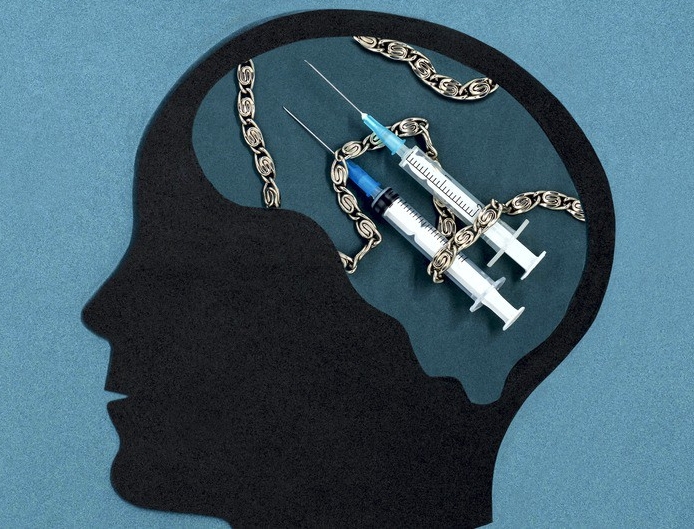
A similar phenomenon happens in intrusive thought in obsessive-compulsive disorder. The OCD patient is not able to block the thoughts, feeling that they are imposed on him. However, the main difference between thought insertion and obsessive-compulsive thoughts is the absence (thought insertion) or presence (OCD thoughts) of the insight. In the case of thought insertion, the patient has no or little insight that the process of insertion/thought control is not real. In the OCD, even though the patient is not able to block the thoughts, he is able to recognize that they are not a part of his personality and frequently knows that they are nonsensical. The thought insertion is Ego-synthym (belonging to Ego), while the OCD thoughts are not regarded as a part of the patient’s personality.
Somatic delusions
A somatic delusion is a person’s wrong and not correctable belief that his/her organs or body shape are ill or abnormal. The person can be convinced that the body is not symmetrical or that its parts are distorted. Sometimes a person can be convinced that some part of the body is atrophic (decreased muscle bulk). On other occasions, he might think he is not able to move a part of his body or move at all. The imagined conviction can lead to protecting a part of the body or stopping movement. Not moving his legs, arms, or head can lead to real muscle atrophy and stiffness of the joints; abandoning walking can cause full invalidism.
Another frequent theme of somatic delusion is the conviction that the body is affected by germs or parasites. The patients affected by such delusion may feel parasites crawling under their skin, accumulating in one part of their body, and causing pain.
Bizarre and not bizarre somatic delusions
There are two categories of somatic delusions: bizarre and not bizarre. A bizarre somatic delusion is farfetched from a situation that can happen in real life. An example of such a delusion could be the conviction that one underwent some miraculous operation, for example, that someone removed his organs but without any visible marks or scars on their body. The explanation of such “organ removal” is as equally bizarre as the delusion itself.
The scenarios behind the non-bizarre somatic delusion are theoretically possible, but by closer investigation it could be proved that they are the product of the person’s fantasy.
In cases in which a patient complains of a functional symptom that is more probable, such as headache, weakness, or pain, they can be easily misdiagnosed as having a somatic disorder by neglecting the psychological origin of the problem.
Disorders with somatic delusions
The somatic delusions can appear in delusional disorder, schizophrenia, dysmorphic disorder, depression with psychotic features, or dementia. A form of somatic delusion is body dysmorphia. Temporarily, somatic delusions can also be observed with intoxication with delirium.
Somatic Symptom Disorder (SSD)
Mental health researchers have also identified somatic delusions. Somatic Symptom Disorder (SSD), formerly called Somatoform Disorder, is such a condition. Disorders Related to Somatic Symptom Disorder are hypochondriasis also called “conversion disorder.” Patients with hypochondriasis firmly believe they have a serious disease despite the opposite medical evidence. In conversion disorder, people experience symptoms such as pain, neurological symptoms, or gastrointestinal problems without any identifiable medical condition.
Monosymptomatic Hypochondriacal Psychosis (MHP)
The somatic delusions can also appear in Monosymptomatic Hypochondriacal Psychosis (MHP). The Monosymptomatic Hypochondriacal Psychosis is a different entity than hypochondria. Hypochondria (also called hypochondriasis) is a subcategory of the Somatic Symptom Disorder. In hypochondria, the somatic delusions are “less deep,” allowing the affected individual some insight that the delusions don’t make sense, despite the fact that they can’t oppose the ideas. In hypochondriacs, the logic says, “It can’t be,” but the feelings undermine the logic, and the latter surrenders.
While hypochondriacs understand that the feared disease is not real, in somatic-type delusional disorder, the patients are unshakably convinced of the physical root cause of their complaints. So, the only difference between delusional disorder and hypochondria is of a quantitative nature.
Hallucinations
Psychiatrists maintain that hallucinations are false sensory perceptions. In essence, there is no external stimulus that causes the hallucinations. They can occur in any of the senses, such as hearing, seeing, feeling, tasting, or smelling. They are often vivid and realistic, and the person experiencing them might not be able to recognize them as not being real. The person affected by hallucinations is unable to control them. Hallucinations can be caused by a variety of factors, including psychiatric conditions, physical disorders, medications, and substance use disorders. Hallucinations can be categorized based on the affected sensory quality.
Auditory hallucinations
are the false perception of hearing sounds or voices that are not actually present. Examples include hearing voices or music that is not there. They are the most common type of hallucinations. They can range from simple sounds, such as a ringing in the ears, to more complex experiences, such as hearing voices having conversations or hearing music. Patients that hear auditory hallucinations sometimes perceive them as coming from inside the person’s head or from outside the person. They can be a single voice or multiple voices, and the voice(s) can be familiar or unfamiliar. The voices can be friendly or hostile and can give commands or make critical comments. Auditory hallucinations are also common symptoms of some mental health conditions, such as schizophrenia, bipolar disorder, and depression.
Visual hallucinations
are the false perception of seeing things that are not actually present. Examples include seeing people, animals, or objects that are not there. Visual hallucinations can have a wide range of causes, including medical and surgical conditions, as well as certain medications and substance use disorders. The underlying mechanism of visual hallucinations can vary depending on the cause. Some of the possible causes and mechanisms of visual hallucinations include:
- Psychosis
- Substance use disorders such as alcohol and drug abuse can also lead to visual hallucinations.
- Neurological conditions such as Parkinson’s disease, dementia, and stroke can cause visual hallucinations due to changes in the brain that affect vision and perception.
- Other causes of visual hallucinations include sleep disorders, migraines, and certain metabolic disorders.
Tactile hallucinations
are the false perception of feeling something that is not actually present. Examples include feeling someone touch or tickle you or feeling bugs crawling on your skin.
It’s also worth noting that there are other ways to categorize hallucinations. For example, some people may experience hallucinations that involve more than one sense at the same time, such as seeing and hearing something that is not there. Psychiatrists call these “multisensory hallucinations.” Additionally, some people may experience hallucinations that are not specific to any particular sense but rather involve a general feeling of unease, such as a sense of presence or a feeling of being watched. It’s important to note that treatment of visual hallucinations typically depends on the underlying etiology, so a proper diagnosis is essential. In order to determine the cause of visual hallucinations, a psychiatrist will do a complete medical history, physical examination, and appropriate diagnostic tests.
Olfactory hallucinations
Olfactory hallucinations, also known as phantom smells, are the false perception of smelling odors that are not actually present. Patients often associate smells with a strong emotional component, as the sense of smell is closely linked to memories and emotions. Olfactory hallucinations can occur in a variety of conditions, including:
- Schizophrenia: Olfactory hallucinations are a common symptom of schizophrenia, a severe mental disorder characterized by abnormal thinking, emotions, and behavior. In this condition, the patient may experience phantom smells that are often unpleasant, such as rotting flesh or burning rubber.
- Epilepsy: Olfactory hallucinations can also occur in some types of seizures, particularly temporal lobe seizures, which can affect the brain’s olfactory centers.
- Other medical conditions: olfactory hallucinations can also occur in other medical conditions such as brain tumors, head injuries, and certain metabolic disorders.
- Certain medications, drug use, or exposure to certain chemicals can also be a trigger. As with other types of hallucinations, it is important to determine the underlying cause of olfactory hallucinations in order to provide appropriate treatment.
- Olfactory hallucinations occur in epilepsy, especially in association with a temporal lobe focus, and commonly form the aura (or earliest phase) of such fits. A patient described a smell of burning rubber regularly just before he became unconscious.
Olfactory Reference Syndrome (ORS)
A delusion of malodour, also known as olfactory reference syndrome (ORS), is a type of delusion in which a person believes that they emit a foul body odor, even though there is no actual odor present. This is a common symptom in schizophrenia and related paranoid states. People with ORS experience significant distress, shame, and social isolation as a result of this belief.
In this condition, the patient may have an intense preoccupation with the belief that they emit a bad odor, even though they have no olfactory hallucinations. They may constantly check themselves, bathe excessively, or use excessive amounts of deodorants and perfumes in an attempt to mask the imagined odor.
ORS can also be a symptom of other mental health conditions, such as depression, obsessive-compulsive disorder (OCD), and body dysmorphic disorder. Psychiatrists do not understand the underlying mechanism of ORS very well. Mental health researchers believe that ORS is related to abnormal activity in certain brain regions involved in the processing of olfactory information.
Treatment for ORS typically involves a combination of behavioral therapy, medication, and supportive therapy. The goal of treatment is to help the patient recognize the delusional nature of their belief and improve their quality of life.
Visceral Hallucinations
Visceral hallucination, also known as coenesthetic hallucination, is a type of hallucination that involves the perception of physical sensations within the body in the absence of any external stimuli. These sensations can include feelings of discomfort, such as burning, twisting, or squeezing, as well as perceptions of movement or rearrangement of internal organs. These hallucinations can be very distressing to the person experiencing them.
Coenesthetic hallucinations are relatively rare and are less well understood than other types of hallucinations. They can occur as a symptom of certain medical conditions, such as schizophrenia, or as a side effect of certain medications. Other causes of coenesthetic hallucinations include psychological conditions such as depersonalization disorder and dissociative disorders, as well as substance use disorders.
Organic factors can also cause coenesthetic hallucinations, such as gastrointestinal or genitourinary disorders and certain neurological disorders. Therefore, it is important to rule out any organic causes before making a diagnosis of a coenesthetic hallucination.
Treatment for coenesthetic hallucinations typically depends on the underlying cause. In cases where a medical condition causes the hallucination, treatment may involve addressing the underlying condition. When a psychological condition causes the hallucination, treatment may involve psychotherapy and/or medication.
Psychoses. Diagnosis and Treatment at CHMC in Dubai
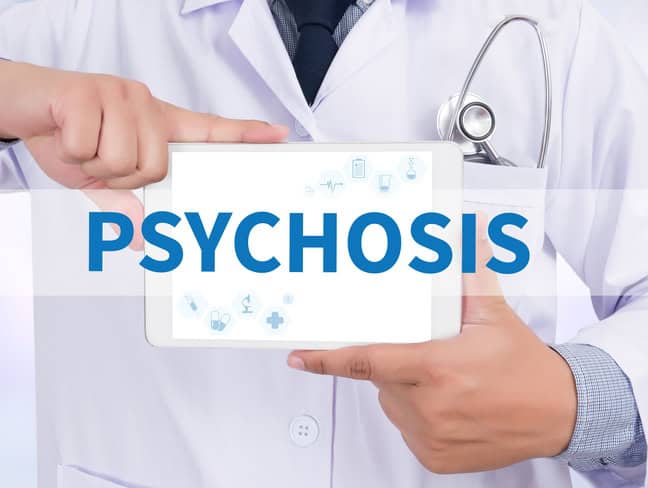
Psychosis, a disconnection from reality, impacts cognitive functions, causing one to experience unreal perceptions.
It impacts the way your brain processes information. This causes you to see, hear, or believe things that are not real. Psychosis is a symptom, not an illness, and can be triggered by a range of factors, including mental disorders and substance abuse.
The age factor in psychosis
Young people are especially prone, typically starting in their teens to late 20s. However, older individuals can also be affected, as well as, on rare occasions, children.
The exact prevalence remains elusive, with studies suggesting a wide range of impacts from 15 to 100 cases per 100,000 people annually.
The gradual onset of psychoses
Psychosis doesn’t strike suddenly; it follows a pattern of warning signs, gradually changing your thought processes. These signs, observable to friends and family, include academic or work performance decline, difficulty concentrating, suspiciousness, social withdrawal, emotional fluctuations, or a lack of emotions.
Hallucinations and delusions are common elements of a psychotic episode. You may hear, see, or taste things others don’t, or hold unusual beliefs regardless of contradictory evidence.
During an episode, hallucinations manifest, encompassing various sensory experiences: auditory, tactile, visual, and olfactory hallucinations. Delusions, ranging from grandiose to persecutory themes, add complexity.
The challenging self-recognition
Individuals with psychosis are often unaware of their condition, as their hallucinations and delusions seem genuinely real.
Triad of psychotic stages
Psychotic episodes evolve through three distinct stages, the specifics varying from person to person.
1. The Prodrome Stage
Mild changes in thought and mood gradually appear in this initial stage. Symptoms may include sleep disturbances, sadness, anxiety, reduced concentration, social withdrawal, and suspicious beliefs.
2. The Acute Phase
The typical symptoms of psychosis emerge, involving confusion, delusions, hallucinations, and shifts in behavior and personality, often noticeable to those around you.
3. The Path to Recovery
Recovery signifies the gradual fading of symptoms, enabling a return to daily routines. With the right treatment, many people never experience another psychotic episode.
Causes of psychosis
Although not yet fully understood, a combination of genetic, psychological, and environmental factors contributes to psychosis.
Triggers of psychotic episodes
Psychosis can be triggered by varying factors. These include mental or physical conditions, alcohol or drug use, and traumatic events. Psychological stress, anxiety, or depression can trigger episodes, while severe sleep deprivation can worsen the condition.
Role of trauma in a case of psychosis
Traumatic experiences, such as the death of a loved one, sexual assault, or war, can lead to psychosis, influenced by the nature and timing of the trauma.
Medical implications
Numerous medical conditions, from brain injuries to diseases like Parkinson’s and Alzheimer’s, can trigger psychosis.
The drugs abuse as a trigger factor of psychoses
Substances like cannabis, cocaine, and amphetamines can significantly affect brain activity, leading to distorted perceptions. Research suggests that drugs may not directly cause psychosis but rather unveil latent conditions, especially among individuals with psychiatric disorders or a family history of psychosis.
The Alcohol Paradox
Alcohol, whether during intoxication, withdrawal, or in cases of chronic abuse, can induce delusions or hallucinations. Stopping alcohol often alleviates symptoms.
Seeking Timely Intervention
If you or someone exhibits psychosis symptoms, reaching out to a healthcare professional is vital. Early treatment significantly enhances effectiveness.
Diagnosing Psychosis
Psychologists, psychiatrists, or social workers conduct thorough evaluations to pinpoint potential causes and related conditions.
Diagnostic process
While there are no specific tests for psychosis, medical professionals rely on detailed questioning, inquiring about family mental health history, medication use, mood patterns, daily functioning, and the nature of any hallucinations or delusions.
Medication for Treatment of Psychoses
The treatment of psychosis involves antipsychotic medications, which can improve the course of the condition. These medications, known as antipsychotics or formerly as “neuroleptics,” target the core symptoms of delusions and hallucinations, often leading to rapid improvements.
Discovery of Medication for Treatment of Psychoses
With the discovery of chlorpromazine in 1952, the foundation for psychiatric pharmacotherapy was laid. It was the first antipsychotic used in the treatment of psychosis. Chlorpromazine became a prototype for numerous subsequent products and was considered a major breakthrough in modern psychiatry.
In the early 1960s, the group of benzodiazepines also entered the market as sedatives. However, the first so-called “typical neuroleptics” caused major side effects, and many patients rejected medication. They were referred to as “chemical straitjackets” since these early medications primarily induced sedation and motor restriction.
The 1990s were marked in psychiatry by a series of new, so-called atypical antipsychotics, intended to be less prone to side effects and more effective than the old medications. Drugs such as risperidone, amisulpride, and quetiapine were introduced to the market.
Today, a wide range of different psychopharmaceuticals is available. Current pharmaceutical research approaches psychoses, among them schizophrenia, as the result of chemical imbalance of neurotransmitters in the brain, which on the neurobiological level is true. However, the onset of psychosis depends not only on the genetic, inherited predisposition but also on external triggers such as environmental and traumatizing life events.
Antipsychotics
Antipsychotics are primarily used to reduce psychotic symptoms such as hallucinations, delusions, disorganized thinking, and sensitivity to internal and external stimuli. These medications are especially important in the treatment of schizophrenia.
How Antipsychotics Work
Antipsychotics help regulate perception and thought processes during acute psychotic episodes. Their main target is dopamine, a neurotransmitter that plays a crucial role in transmitting signals between nerve cells. Antipsychotics block dopamine receptors (D-receptors), thereby reducing the activity of nerve cells that rely on dopamine for communication. Modern antipsychotics also affect other receptors, such as serotonin receptors, broadening their mechanism of action.
Types of Antipsychotics
Antipsychotics are divided into two categories: typical (classical) and atypical (modern) antipsychotics.
- Typical/Classical Antipsychotics: These are older, first-generation drugs, such as Haloperidol, which are effective in treating psychotic symptoms but often cause significant side effects, particularly affecting motor functions.
- Atypical/Modern Antipsychotics: These second-generation drugs are highly effective in reducing positive symptoms like delusions and hallucinations. They have a different side effect profile compared to classical antipsychotics, with fewer motor-related issues. However, they can affect metabolism, leading to weight gain. Examples of atypical antipsychotics include Risperidone, Olanzapine, Clozapine, Quetiapine, Ziprasidone, and Aripiprazole.
Potency Classification of Antipsychotics
In the past, antipsychotics were classified based on their strength—high, medium, or low potency—depending on how strongly they blocked a specific dopamine receptor (D2). High-potency drugs, such as Haloperidol, significantly reduced psychotic symptoms. Recent research has identified additional dopamine receptors involved in the action of atypical antipsychotics.
Low-potency antipsychotics, which primarily have a calming and sleep-inducing effect, are often used to manage psychomotor agitation. Examples of low-potency antipsychotics include Chlorprothixene and Pipamperone.
Use of Antipsychotics
Antipsychotics are used primarily as a supportive treatment for psychotic disorders, particularly schizophrenia, as well as for various states of agitation. They are also applied in cases of mania or bipolar disorders, behavioral disorders in children, and restlessness or sleep disturbances in elderly patients caused by psychosis. Additionally, antipsychotics are employed in pain management and to combat nausea after surgery. However, their use outside the treatment of schizophrenia should be approached with caution. Even with long-term use, antipsychotics do not lead to dependency.
Side Effects of Antipsychotics
Aside from changes in blood composition and mild blood pressure reduction, typical (classical) antipsychotics can cause what are known as extrapyramidal motor effects. These involve disruptions in the neural pathways responsible for fine motor control and can manifest as muscle spasms, restlessness, involuntary movements, and general slowing of movement. Atypical antipsychotics tend to cause fewer motor-related side effects but may lead to other issues, such as weight gain.
Psychotherapy in treatment of psychosis
Counseling, combined with medication, offers an effective strategy for managing psychosis. Cognitive-behavioral therapy (CBT) helps recognize psychotic episodes, distinguish between reality and imagination, and emphasize the importance of medication adherence.
Psychoeducation and family support
Family psychoeducation and support improve problem-solving and strengthen family bonds.
Summary
Psychosis blurs the line between reality and illusion, creating a complex challenge. Yet, early treatment is highly effective and key to preventing long-term disruptions in relationships, work, and education.
Treatment for Psychoses at CHMC in Dubai. Summary
Psychosis is an abnormal psychological condition that affects thoughts and feelings. The condition is not a defined psychiatric diagnosis. Psychiatrists use the term psychosis to describe a group of symptoms that can appear in different mental and physical illnesses.
Psychotic symptoms may appear as delusions (irrational thinking), hallucinations (false sensory perceptions), agitation, sometimes aggressive behaviour or its contrary, as social withdrawal from the real world while the patient feels trapped in the world of fantasy.
Therapy and Treatment Options for Psychoses
It’s important to start treatment as soon as possible using all available treatment options. This applies to both the first psychotic episode and any relapse. While some symptoms may improve quickly, others might be harder to manage. Depending on the severity of the case, one can receive treatment in an outpatient or inpatient setting.
The approach depends on the cause of the psychosis. For secondary psychosis, the focus is on treating the underlying condition, such as surgery for a tumor or correcting metabolic disorders. We tailor therapy to the patient’s needs. A strong therapeutic relationship is the foundation of any treatment. Alongside antipsychotic medication, psychotherapy plays an important role.
Treatment with Antipsychotics
Antipsychotic medications can treat psychotic symptoms regardless of their cause. Antipsychotics usually improve the course and prognosis of the illness. They alleviate or even eliminate symptoms such as delusions and hallucinations, often bringing rapid improvement.
The duration of treatment varies for each individual and depends on the root causes. In such cases as schizophrenia, treatment lasts several years. For recurring episodes, lifelong medication may be necessary. The choice of medication depends on individual needs, weighing benefits and risks. Patients often worry about becoming dependent on these drugs, but antipsychotics do not cause addiction.
Psychotherapeutic Treatment Options for Psychoses
Supportive psychotherapy and cognitive therapy are helpful even during acute phases. They aid in managing the illness and improving outcomes. Therapy focuses on reducing overstimulation, addressing fears and insecurity, and helping patients understand their condition. Cognitive training programs have proven effective in improving work rehabilitation for schizophrenia. Participation in psychoeducation and self-support groups can also improve treatment outcomes.
FAQ’s about Psychosis
In the below Frequently Asked Questions section, we provide the answers to the most common concerns of our patients about psychosis. CHMC provides therapy for psychiatric disorders, among them also psychosis.
At CHMC, we are here to guide you every step of the way. Contact us for professional help with psychoses:
Call CHMCWhat is psychosis?
Psychosis is a mental health condition characterized by a loss of contact with reality. Individuals experiencing psychosis may have hallucinations, delusions, disorganized thinking, and impaired insight.
What are the symptoms of psychosis?
Symptoms of psychosis include hallucinations (seeing, hearing, or feeling things that aren’t there), delusions (false beliefs not based on reality), disorganized thinking or speech, reduced emotional expression, and impaired functioning in daily activities.
What causes psychosis?
Psychosis can be caused by various factors, including mental health disorders like schizophrenia, bipolar disorder, severe depression, and substance abuse. It can also result from medical conditions, brain injury, extreme stress, or sleep deprivation.
How is psychosis treated?
Treatment for psychosis typically involves a combination of antipsychotic medications, psychotherapy, and support services. Hospitalization may be necessary in severe cases to ensure safety and stabilization. Early intervention and ongoing support are crucial for managing psychosis effectively.
Can psychosis be cured?
Psychosis triggered by drug abuse or metabolic problems can be cured. In other cases, especially in psychosis related to schizophrenia, there is no cure, but the symptoms can be managed effectively with appropriate treatment and support.
Are psychosis and schizophrenia the same thing?
No, psychosis and schizophrenia are not the same thing. Psychosis is a symptom or feature of various mental health disorders, including schizophrenia. Schizophrenia is a specific mental health disorder characterized by symptoms such as hallucinations, delusions, disorganized thinking, and impaired functioning. While psychosis is a common feature of schizophrenia, not all individuals experiencing psychoses have schizophrenia.
What happens when psychosis is not treated?
When psychosis is not treated, it can lead to significant impairment in daily functioning, including difficulties with work, school, relationships, and self-care. Untreated psychosis can result in increased risk of self-harm, suicide, and harm to others. It can also contribute to social isolation, financial problems, legal issues, and decreased quality of life. Early intervention and appropriate treatment are essential to manage psychosis effectively and reduce its negative impact on individuals’ lives.
Are psychosis and mania the same?
No, psychosis and mania are not the same. Psychosis is a set of symptoms that can appear in distinct psychiatric or physical illnesses. Manic episodes can be associated with irrational thinking and hallucinations fulfilling the criteria of psychosis.
How is psychosis diagnosed?
Psychosis is typically diagnosed through a comprehensive psychiatric evaluation, which includes a thorough assessment of the individual’s symptoms, medical history, and family history of mental illness. The Diagnostic and Statistical Manual of Mental Disorders (DSM-5) criteria are often used by mental health professionals to diagnose psychosis. This may involve ruling out other medical conditions that could mimic psychotic symptoms, conducting interviews with the individual and sometimes with family members or caregivers, and possibly using psychological assessments or laboratory tests.


